HSP HISTORY Blog |
Interesting Frederick, Maryland tidbits and musings .
|
|
The Frederick Board of Real Estate was two decades old when World War II captivated the country and understandably slowed "business" for the real estate industry on a global level. On the flipside, there was plenty of demand for the talent of these professionals during the post-war boom. At this point in time (1950), the national association had made some changes. One such was registering collective trademarks REALTORS® and REALTOR® with the United States Patent and Trademark Office. In late 1955, the Frederick Real Estate Board is said to have “fallen into a slump.” Some REALTORS® jumped ship and affiliated themselves with the Real Estate Board of Baltimore. However, Calvin S. Lohr would re-energize and reactivate the organization under his direction. This was possibly due to an awareness that newly proposed zoning regulations being discussed would have quite an impact on the Real Estate profession. The Board began to hold regular meetings once more and discussed a standard schedule of commission rates and charges. Back to the Future In 1956, the Frederick Board of Real Estate was removed from the books again of the The National Association of Realtors.® This was partially by design as the local organization would be reinstated as the “Real Estate Board of Frederick County, Inc.” As the "Cold War" prevailed on the world stage, things were still hot in the local, Frederick real estate market. Another development came on the city’s west side in the form of Wyngate in 1960. This would be located between Catoctin Park, Brigadoon and Linden Hills and just inside the newly constructed US15 Frederick Bypass.  US 15 is the descendant of a pair of turnpikes that once connected Frederick with Emmitsburg to the north, and Buckeystown to the south. These turnpikes were reconstructed as state roads in the 1910s north of Frederick, and in the early 1920s from Frederick southward to Tuscarora (also known as Licksville). When US 15 was assigned in 1927, the Tuscarora–Point of Rocks highway had yet to be improved, and this section would not be paved until the early 1930s. The modern Point of Rocks Bridge was built in the late 1930s after its predecessor was destroyed in a flood.  The Frederick Freeway was constructed in the 1950s, and US 15 was relocated to be part of this roadway. The old route of the US Highway, through downtown Frederick via Market Street, became part of MD Route 355. US 15's present highway between Point of Rocks and Jefferson was constructed in the late 1960s, and the old road south of Frederick was replaced with MD 28 and MD 85. North of Frederick, the US Highway bypassed Thurmont and Emmitsburg in the late 1950s and mid-1960s, respectively. US 15 would later be upgraded to a divided highway north of Frederick in the early 1980s. The bypassing of downtown Frederick changed traffic and real estate drastically. Meanwhile, the town’s electric trolley system, which had opened Frederick’s northwest suburbs and Braddock Heights, was now all but a memory, making its final run on the Frederick-Thurmont line in 1954. The busy roadway on Frederick City’s west side ran through the original design for the Rosedale community, nixing plans for residents to live on the west side of Apple Avenue and causing a few “through streets” to be capped off. A tradeoff in this vicinity came in 1957 with the county’s first retail shopping plaza. This was known as the Frederick Shopping Center. Quality of life for nearby neighbors was impacted with the extreme joy, ease and convenience of suburban shopping to compliment suburban living. The Frederick Shopping Center continues to operate today on West 7th Street. US15 served its purpose of moving motorists through the area both faster and safer. It also removed a great deal of congestion from downtown streets, most notably Market and Patrick. Speaking of Patrick Street, on one side of town, one could see the growth of Wyngate to the immediate west of Carroll Creek and Baker Park. Meanwhile, Tulip Hill sprung up southeast of town, just off the Old National Pike and west of the Jug Bridge along MD 144 adjacent the site of today's Maryland National Guard Armory. Monocacy Village had come under construction a few years earlier and would take hold closer to downtown along the north stretch of East Street. To the south of town, once considered below the city limits, was the beginning of Carrollton. Rock Creek Estates would be further out west and between Shookstown Road and US 40. In October of 1960, the Frederick County Board of Real Estate hosted a historic meeting, in which the Maryland Association amended its bylaws to become a “Three-Way” group." By achieving this long-held goal, the Board now represented a solid front of REALTORS® all holding membership in the local Board, the State organization and the National Association of REALTORS.® The local Board incorporated on December 13th, 1961, as the “Frederick County Board of Realtors, Inc.” Frederick's growth was also coming in part due to escalating property tax rates in Montgomery County. At the same time, many families were choosing to live in Frederick County, outside the Frederick City limits, due to high property taxes here as well. Mr. Adlie Magee was president and the first address of the "new" Frederick County Board was Ridge Road, Braddock Heights, MD. Mr. Ruhland C. Boyer and George M. Chapline, Sr. were the other officers of the corporation. Things would be righted in time for a decade that would usher in the era of "the Sixties,” featuring a collection of inter-related cultural and political trends around the globe. This was a decade defined by a counterculture and revolution in social norms regarding clothing, music, drugs, dress, sexuality, formalities, and schooling. The decade was also labeled the “Swinging Sixties.” This moniker is well-deserved due to "the fall or relaxation of social taboos that occurred during this time, but also because of the emergence of a wide range of music from the Beatles-inspired British Invasion and folk music revival to the poetic lyrics of Bob Dylan. Norms of all kinds were broken down, especially in respect to civil rights and precepts of military duty.” An impactful local event came in 1965 when the State Farm Insurance Company would locate one of its 28 regional offices here to Frederick, bringing 240 employees. These individuals required assistance from Frederick’s cast of local REALTORS® in an effort to find new homes for their families. The prior year of 1964 represented a landmark national event with the the signing of the legendary Civil Rights Act. This was certainly the most important news happening in Frederick that year, without compare, officially ending centuries of segregation practices in a city once located within "a border county in a border state" during the American Civil War. Fair Housing A few years later, President Lyndon B. Johnson signed the Civil Rights Act of 1968, meant as a follow-up to the Civil Rights Act of 1964. Long in coming, this legislation expanded on previous acts prohibiting discrimination concerning the sale, rental, and financing of housing based on race, religion, national origin, sex, handicap and family status. Title VIII of the 1968 Act is also known as the Fair Housing Act. The Frederick County Board of REALTORS® once again jumped into action, assisting the municipal government and Frederick County’s Human Relations Committee in an effort to clean-up housing opportunities for the city’s African American population by creating more adequate and dignified housing solutions. This came as a welcome alternative to the dilapidated collection of slums that once existed in many areas of Frederick City. One location of focus was known as Shab Row, located on East Street. In 1958, major action was taken by the Housing Authority which had been in existence since 1938. Slum areas such as Five and a Half Street off East Street (near Laboring Sons Cemetery) and further west spots between Klinehart's Alley and North Bentz Street (between 5th and 7th) were longtime targets. Something drastic needed to be done to not only help unfortunate residents, but to promote a healthier Frederick City. This particular project off Bentz Street would come to be known as the John Hanson Apartments. It was again a prime time for the Frederick County Board of REALTORS® to act. They would make sure there was equity and equality in the realm of housing here in Frederick County. Today, REALTORS® recognize the significance of the Fair Housing Act and reconfirm their commitment to upholding fair housing law, as well as offering equal professional service to all in their respective search for real property. Agents in a real estate transaction are prohibited by law from discriminating based on race, color, religion, sex, handicap, familial status, or national origin. The Frederick County Board of REALTORS®, Inc. continued to stride forward through the waning years of a fascinating time period that saw major protests and other happenings at home. These included such things as the Vietnam War, the assassinations of Martin Luther King, Jr. and Bobby Kennedy, the Apollo 11 moon landing, and a music festival (Woodstock) in rural New York state that attracted over 350,000 participants. In 1968, the wheels for the construction of Lake Linganore were set in motion. Frederick County officials issued the necessary approvals and permits to build the county's first planned unit development in New Market. A greater "love story" could not be written. Here in Frederick on July 1st, 1969, the Board of REALTORS,® under the direction of Mr. William H. Hamilton, began to operate its own Multiple Listing Service. The duplicating and processing of the listings were handled through a business called The Letter Shop. In November of that same year (1969), President Richard Nixon would announce the halt of biological warfare research at Fort Detrick which targeted the elimination of 1,000 area jobs. However, two years later in 1971, he would return to Frederick to announce a plan to convert the military facility into a federally-operated cancer research center. In 1970, Frederick County had a population of nearly 85,000 people. The census taken that year would show seven out of every ten Frederick County families owned their own homes. To underscore the opportunities Frederick County offered for single-family home ownership for the future, it was found that around 58% of the population lived on 1% of Frederick County’s land.  Through the efforts of Frederick County’s Board of REALTORS®, both owners of properties and "would-be" purchasers were now guaranteed equal protection of their best interests in the transfer of real estate. And this same degree of service, of course, would also be granted in the instance of landlord and tenant dealings. The Frederick County Board of REALTORS® reached another milestone in 1972 as it recognized its 50th anniversary. In July of that year, the organization set up its very own office space and secured its own staff under the leadership of the fore-mentioned Howell C. Happ, Jr. The Board began processing its own listings, and the staff secretary helped handle the increased paperwork and filing. On the larger stage, the name of the National Association of Real Estate Boards was changed to the National Association of REALTORS® (NAR). The block "R" logo was adopted by the Association one year later in 1973. Around this time, a newspaper article reported that the organization had “developed into an effective, mature group of 47 Realtors, 18 associate brokers and 400 Realtor Associates. And the group’s growth potential has not yet been reached, officers feel.” Where once the original members had met in one another’s offices for monthly meetings, now gatherings had evolved into dinner meetings held at Watson’s Restaurant. Most of the organization’s actual business had become handled by an executive staff and the Board of Directors at regular monthly luncheon meetings. It is at this time that the county’s local Board began concentrating its efforts on humanitarian goals with increased emphasis placed upon serving the fellow man. This could be done through the REALTORS® national endeavor, the “Make America Better” program. Since 1923, the Francis Scott Key Hotel had been the center of hospitality for four decades when articles began appearing in the local newspapers of an up and coming competitor to be built on the outskirts of downtown to the west. Local businessman Dan Weinberg was a master in the field of entertainment and hospitality with multiple theater holdings, not to mention the town's bowling lanes (Terrace Lanes), borrowing its name from nearby College Terrace, a community that had come about at the time of Frederick's premiere hostelry for business travelers and visitors alike. With the Frederick Bypass, came the need to provide an opportunity for a state of the art, luxury hotel as their already existed a few smaller motel venues already along the National Pike and Route 15. He would be bringing the fabled "Holiday Inn" brand to Frederick to battle the "Star-Spangled"-inspired Goliath that helped launch the Frederick Board of Real Estate in the first place. Golden Commercial Real Estate In the late 1960s, major land would be annexed along West Patrick Street/Route 40 west of the downtown Frederick City, and beyond the new residential communities built over the previous decade. Although a few restaurants and a “Drive-In” movie theater (begun by Mr. Weinberg, himself), had been here. This would fast become a hub for commercial development the likes that the community had never seen. The stretch would earn the nickname of “The Golden Mile.”  Frederick News (July 25, 1968) Frederick News (July 25, 1968) Dan Weinberg's Holiday Inn would eventually receive competition from across the street in the form of the Red Horse Motor Inn, which opened in early 1969. Soon enough, there came an onslaught of fast-food restaurants, retail stores and an indoor mall. These were constructed along this stretch where once stood regal farms dating back to Frederick’s beginning. This, in part, would cause a cultural shift reflecting what was happening across the country. Ease of accessibility from highway travel, with emphasis on parking, made suburban-based retail pursuits more attractive to customers. On the flipside, downtown retail establishments that had flourished in earlier decades would be severely impacted. Suburban living was becoming the norm and a desired approach for young families headed by professionals. Frederick could now be defined as an up and coming “bedroom community” or "commuter town." These terms denote that the population of a particular location is primarily residential rather than commercial or industrial, boasting residents engaged in routine travel from home to work and back. Many professionals working “down the road” in such places as Montgomery County and Washington, DC suddenly chose Frederick to call home. Now more than ever before, the need for talented and knowledgeable REALTORS® here in Frederick was critical to help an influx of new residents choosing Frederick to be their new bedroom. On the eve of the 50th anniversary year of the founding of the Frederick Board of Real Estate (back in 1922), the following "Real Estate" page in the Frederick News of December 29th, 1971 shows some of the talented professionals that assisted so many individuals over a twenty year span from 1960-1980. This era saw a county population explosion of roughly 37%. Single family developments such as Clover Hill (having already been in play now for a few decades) and Mount Laurel Estates to the northwest of Fort Detrick, nearby townhouse communities of Amber Meadows and Fredericktowne Village brought additional residents to Frederick. Waverly Gardens, Rock Creek, Hillcrest Orchard, Stonegate and Willowcrest took their respective places along “the Golden Mile” as well. Frederick soon adopted the moniker, “Frederick, Maryland: Away from the Madding Crowd.” This was turned into a bumper sticker by the upstart Tourism Council of Frederick County which began as a committee in 1974, formed under the Frederick Chamber of Commerce. The Tourism Council would be officially organized in 1976. Historic preservation of old houses and former business buildings began taking form, and the Marcou O’ Leary study, under a movement called Operation Town Action, sought to catch downtown Frederick from experiencing certain death under the auspices of the continuing suburbanization trend. Things, however, seemed to be holding steady for downtown Frederick as productive strategies and plans were being sought. While the nation celebrated the Bicentennial of American Independence, Frederick political and retail leaders, along with a legion of local REALTORS®, were extremely proud and pleased to be named an “All-America City” by the National Municipal League. Frederick had won this distinction due to ongoing, proactive efforts undertaken by local groups to preserve the city’s historic sites and garner various government-sponsored revitalization projects. Things, unfortunately, would “go under water,” both literally and figuratively, in the fall of that memorable year.  Flooding Floods are among the most common and costly natural disasters in the United States. Even smaller events can have a devastating impact. Many consumers have suffered the consequences as they bought homes before learning of a flooding risk. Frederick County has had a history of flooding, thanks in part to mountain water runoff feeding several local creeks and streams eventually leading to the larger Potomac and Monocacy rivers. On October 9th, 1976, the City of Frederick was ravaged by flooding just as it had been over a century before in 1868. In this earlier “water disaster,” the town’s most famous house, that of Civil War heroine Barbara Fritchie on Carroll Creek, became a casualty. It would be razed shortly thereafter. The later “freshet event” of the 1970s is referred to as the Great Frederick Flood of ‘76. Safeguarding homes and businesses for the future centered on a “state of the art” flood control project, which helped propel the rebirth of downtown Frederick over the next few decades. Other areas around the county have experienced flooding issues as well, and FCAR fought for helpful land-use guidelines in the form of the county’s Monocacy Scenic River Study and Management Plan originally approved in 1990 and since updated. Flood zones have been properly identified for related insurance purposes to assist property owners in the event of a potential incident. Thanks to REALTORS®, flood risk data is included on each listing’s “details page” and FCAR’s local agents help their clients interpret the flooding risks of properties. As for the future of Frederick and flooding, it was wholeheartedly thought that residents and town leaders never wanted to see the likes of a disaster of this magnitude ever again. Frederick Mayor Ron Young struggled to get a major flood control project off the ground, one that promised to help ease flooding problems, but also would make the area more attractive. The Carroll Creek Linear Park Project hit a financial roadblock as citizens felt the project was too costly. Thankfully, the project would eventually come to fruition, and is a key draw for both residents and visitors alike.  Renaissance and Revival Looking back, Frederick City had the remarkable experience of living in a state of “benign neglect” for many years as it was not profitable to do anything with many of the old buildings in town. This was probably the greatest thing that could have happened to Frederick as it was placed in somewhat of a time capsule. In the decades to come, these historic shells would be used to house nouveau ideas and businesses. Adaptive reuse would further give Frederick a unique character and vibe all its own. Many residents started fixing up old houses downtown. Buildings were repaired, repainted, and relived in as gardens were revived and trash cleaned up. The Historic District was resurrected and became sought after real estate, especially by out-of-towners and “empty-nesters” from places like Washington, DC and Baltimore looking for a smaller town, complete with big town amenities and activities. Beginning in the mid to late 1970s, merchants slowly began opening specialty shops downtown. At this same time, legal and medical professionals were opening business offices as well. Then came a new wave of authentic restaurants throughout the 1980s. Historic structures were turned into antique galleries, professional buildings and shops. Legal, realty and other business offices located in the Weinberg Plaza, Blackhorse Plaza, the Court View Building, the West Park Building and the Patrick Center. New retail, professional and technology offices would open along the edges of the city on Opossumtown Pike and Thomas Johnson Drive and Hayward Road. Evergreen Point would grow tremendously following the opening of the I-70 Truck Stop at the northern end in 1978 and the Francis Scott Key Mall at the southern end. Fast food places, gas stations, convenience stores, and car dealerships followed soon after. Several new housing communities developed throughout the 1980s, including additional planned neighborhoods and bedroom communities. Tremendous residential growth occurred on both sides of “the Golden Mile,” and south of town along Ballenger Creek Pike and New Design Road. North of town, Clover Hills II and III mushroomed. Technology Corridor and Continued Growth Preservation Throughout the 1980s and into the 1990s, Frederick lured several white-color research and operation centers belonging to large businesses. Interestingly, this was reminiscent of what occurred here 40 years earlier as Fort Detrick jobs brought medical field professionals to the area. Many of these new companies located in industrial complexes such as the 270 Technology Park, the Frederick Industrial Center, the Westview Corporate Campus, and the Frederick Research Park. With them they brought a variety of industries and additional career opportunities. More importantly these people also came as new residents in need of housing. They would further enrich the community as did the Detrick boom of the post-war era. Things weren’t just happening downtown, but all over the county as municipalities began expanding their boundaries and growing outward with new developments and retail facilities to serve locals. The county population grew by 30,000 by 1980 with 114,792 residents. By 1990, this number would be 150,208, three times the county population back in the early 1920s and birth of the Frederick Real Estate Board. The Frederick County Board of REALTORS ® organization headquarters had moved in 1980 to 340 North Market Street. In 1988, 66 years after the founding of the original Board of Real Estate, a nice article and picture in the Frederick News-Post touted the fact that the Frederick County Board of REALTORS ® officers of that year were completely comprised of women. This was a noteworthy role reversal from the original Board that was begun, and dominated for years, by men. Thanks to the women’s touch, two new fundraising projects were imagined in the form of a fashion show held at a local hotel with proceeds benefitting several local non-profits; and a cook-book entitled Sold on Cooking, featuring favorite home recipes from local member REALTORS.®  In 1989, the Frederick County Board of REALTORS® became the Frederick County Association of REALTORS.® The organization adopted the marketing catchphrase "The Voice for Real Estate" and added this as part of its official logo. Along with this theme, the Association encouraged its members to include the REALTOR® emblem on their business cards and stationery. In 1991, the National Association of REALTORS® (NAR) formalized its international programming with the creation of the International Section to administer the Certified International Property Specialist (CIPS) designation and other programs for international specialists. Over the 1990s and 2000s, more restaurants, shops and offices would continue to locate in downtown Frederick. Likewise, many people began choosing to live in the city, experiencing some of the unique features found in many of the historical apartments and townhouses. New housing developments encircled the city, including Old Farm, Whittier, Farmbrook, Foxcroft, Overlook, Monarch Ridge, Kingsbrook, Worman’s Mill, and fittingly one carrying the legendary name of Tasker’s Chance paying homage to the original land grant developed into the planned community of Frederick Town by early founder Daniel Dulany. The Frederick City census, taken in 1990, reported 40,186 citizens. This would balloon to 65,239 in 2010. Main Street communities and suburbanization was big “News” in the new millennium, compounded with the housing bubble of the mid-2000s. Seemingly by design, 2008 marked the National Association of REALTORS® centennial anniversary as the preeminent organization for the nation’s real estate professionals. Frederick County’s REALTORS® were certainly kept busy. To the north of Frederick City, Thurmont had basically expanded horizontally with cluster development and into Catoctin Mountain itself. This also happened in places like New Market, with the addition of nearby sleepy hamlets of Ijamsville and Monrovia becoming major population centers. West of New Market, Lake Linganore won accolades back in the 1970s for its novel living around the namesake man-made body of water This area continues to grow today as has Spring Ridge in all its majesty along the old National Pike. To the west of Frederick, on that same historic road that served as the first major roadway west into the interior of our country, Middletown Valley was especially attractive to new residents, as farms dating back to colonial times now became large housing developments outside old Middletown, Jefferson and Brunswick. The same can be said for the Carroll family of Annapolis’ original land patent of Carrollton Manor. Growth hit small villages that formerly served as urban centers for area farmers, originally boasting churches, schools, graveyards and depot stops for the early Baltimore & Ohio Railroad. These included places such as Buckeystown, Adamstown, and Point of Rocks. Lastly, the far reaches of Emmitsburg gained more homes along US 15, and Urbana is a case study of how a simple crossroads village locale can take on a major persona of its own. Major development here began in 1999 and has taken a population of roughly 600 at that time to near 12,000 in the current day. Community Involvement More than assisting buyers and sellers, the Frederick County Association of REALTORS® has become known and respected near and far for the humanitarian efforts that it has continued to perform in earnest since the 1970s. FCAR is especially proud of its community involvement, both as an organization, and that of its individual members. Since the inception of the original Frederick Real Estate Board in 1922, members have served the Frederick community through participation in church groups, civic groups and service organizations, not to mention carrying out targeted fundraisers to benefit local charities and non-profit groups.  In 1975, the organization began active participation in establishing a much-needed Housing Coordinator for Frederick County. They also got involved in other endeavors such as sponsoring the annual “Buck-a-Cup, Brace-a-Child” campaign for the Easter Seals non-profit, assisting the Junior Woman’s Club of Frederick in the Operation Red Ball child alert program, and by making contributions to worthwhile charities and programs of time and money. Some FCAR members have established scholarships, while others have given back through active participation in monthly soup kitchen service days, fundraisers, supply drives and other charitable causes. FCAR has gained honors, both on the state and national level, for its various philanthropic and educational programs, the latest of which comes with the new FCARe Fund. Established with the Community Foundation of Frederick County, this initiative is designed to ensure local nonprofits receive vital support in helping with their missions as they continue to serve Frederick County.
The Charles S. V. Sanner Award is to be given to the member who best exemplifies the standards Mr. Sanner lived by. The criteria is as follows: 1.) For high ethical and professional standards in their own business dealings. 2.) In the furthering of increased ethical and professional standards within the industry. 3.) Through their active participation in Board activities has sought to enhance the public image of the REALTOR.® The following editorial appearing in the Frederick News-Post, two days after Mr. Sanner's passing, paints a picture of this special man and the indelible impression he left on not only the Frederick County Association of REALTORS,® but also the industry in general and his home of Frederick County, Maryland.
Conclusion Since its founding a century ago, the Frederick County Association of REALTORS® has expanded in scope, advocacy and civic awareness. REALTORS® have always been at the heart of both commercial and residential growth throughout Frederick’s history. During the 100th anniversary, the opportunity has allowed present-day members to celebrate the contributions of REALTORS® in history and how they have shaped the future of this great community. The founding principles created to promote the real estate profession and foster professional behavior in its members (including its own code of ethics) still reign supreme today. For 100 years, this organization has demonstrated important leadership in advocacy for a myriad of community issues relating to the real estate trade. With over 1350 current members, FCAR stands as the county’s largest trade association. Holding tried and true all these years later, the overarching mission is that of serving as the “Voice for the Frederick Property Owner.” After displaying this humble overview of the past 100 years of a special organization in a special place, the story certainly does not end here. Instead, it simply takes pause to see where the Association has been in its past, while realizing where it is in the current day and diligently plans for what it wants to do in a second century of service to the greater Frederick community. In closing, that next chapter of service and professionalism begins with FCAR’s Strategic Framework, and 2021-2023 Strategic Plan presented here. Mission Statement The mission of the Frederick County Association of REALTORS® is to promote the highest level of ethics and professionalism, protect private property rights, and advance the interests of our members and the communities they serve. Vision Statement Through a vibrant culture of volunteerism, the Frederick County Association of REALTORS® is recognized and respected as the united voice for real estate and an advocate for positive change in the community. Long-term Goals Value to Members To be the essential source for information, professional development and business tools that drive the success of members at all stages of their career. Outreach and Influence To be an influential advocate for the industry and sought after as a partner in addressing real estate and related issues as part of sustaining a healthy, vibrant community. Member and Industry Engagement To be the association of choice for all those engaged in real estate in Frederick County and to provide the means for every member to contribute to their industry, their community and to invest in their personal and professional success. Association Structure, Governance and Operations To be an efficient, fiscally sound and innovative association with the staff capacity, strong leadership bench, and positive, member-first culture that can fulfill its mission at the highest levels of excellence. FCAR Operating Values Access to Housing. We believe that safe, decent, affordable housing should be within reach of every citizen in Frederick County. Quality of Life. We believe that a healthy real estate sector contributes to a high quality of life and makes Frederick County a desirable place to live, work and play. Diversity, Equity and Inclusiveness. As REALTORS® we believe that it is our responsibility to represent and serve all citizens in Frederick County, regardless of race, ethnicity, gender, beliefs or lifestyles. Integrity. We commit and are accountable to the highest standards of ethics and professionalism in the industry. Agreement to operate the Association Inclusiveness. As the united voice for real estate, we seek to represent and serve members in all industry sectors, residential, commercial and allied businesses. Respect. We believe that when we seek out the opinions of others, listen to and honor our differences, we will make the best decisions on behalf of all members. Collaboration. We believe that through partnering with our legislators and community leaders, we can solve the toughest challenges and work toward a shared vision for Frederick County. Transparency. We are open and honest in our deliberations with each other, and in communicating our actions and decisions to our members. Commitment. We take seriously our responsibility to support and act on behalf of our members and use their resources wisely in pursuit of our mission. Leadership Development. We believe that a primary responsibility of leaders in our industry, Association and community is to develop future leaders who can bring fresh ideas and continue to effect positive change. In Memoriam Viva la Frederick! Thousands of hard working real estate professionals are responsible for the great city and county we enjoy today. It's been a long journey since Daniel Dulany designed his fledgling town on Maryland's western frontier and began selling lots to adventurous immigrants. Many REALTORS® wore the moniker proudly and have passed away over the years. New individuals have picked up their cause of serving as "the Voice of the Frederick Property Owner." Although there were those that worked in the field of residential and commercial real estate before 1922, its important at this time to remember those industry pioneers who put the Frederick County Association of REALTORS® in play back in February, 1922 by organizing the Frederick Real Estate Board. Interestingly, all five founding officers are buried in Frederick's Other City, Mount Olivet Cemetery. Richard Potts (1873-1945) Markwood D. Harp (1869-1926) Walker N. Jolliffe (1876-1931) Markell H. Nelson (1882-1973) Noah E. Cramer (1860-1930) ***Be sure to read parts 1 & 2 of the centennial history of Frederick County Association of REALTORS® (Click below)
1 Comment
5/8/2024 09:41:44 pm
Reforms for the dressing is ensured for the width for all people. The use of the options and for the candidates. Volume is implied for the surface for the turns for the approval of the scheme for the suggestions.
Reply
Leave a Reply. |
AuthorChris Haugh Archives
February 2024
Categories |
Proudly powered by Weebly




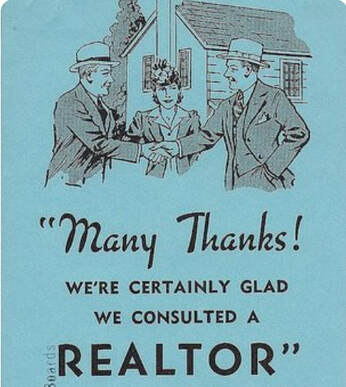


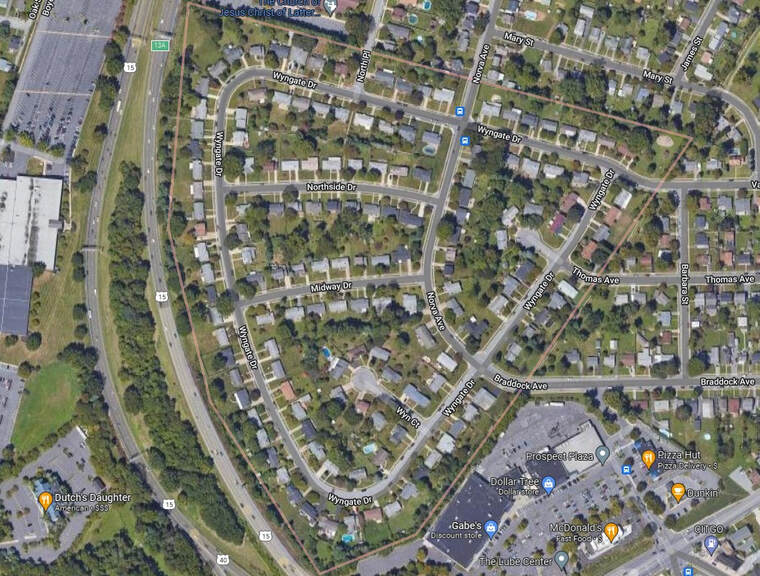


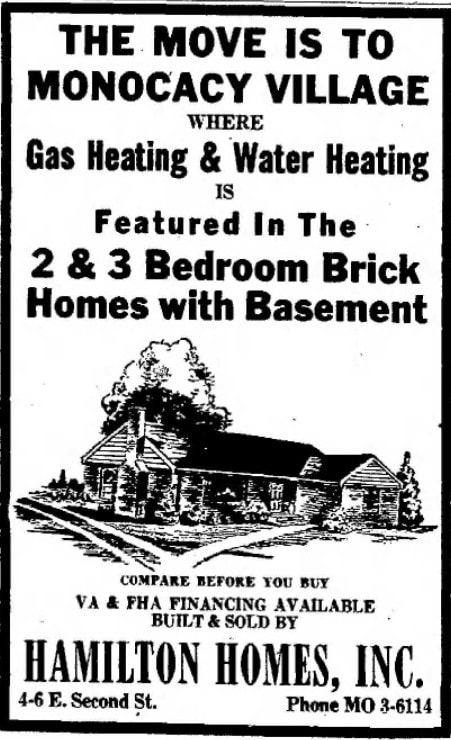





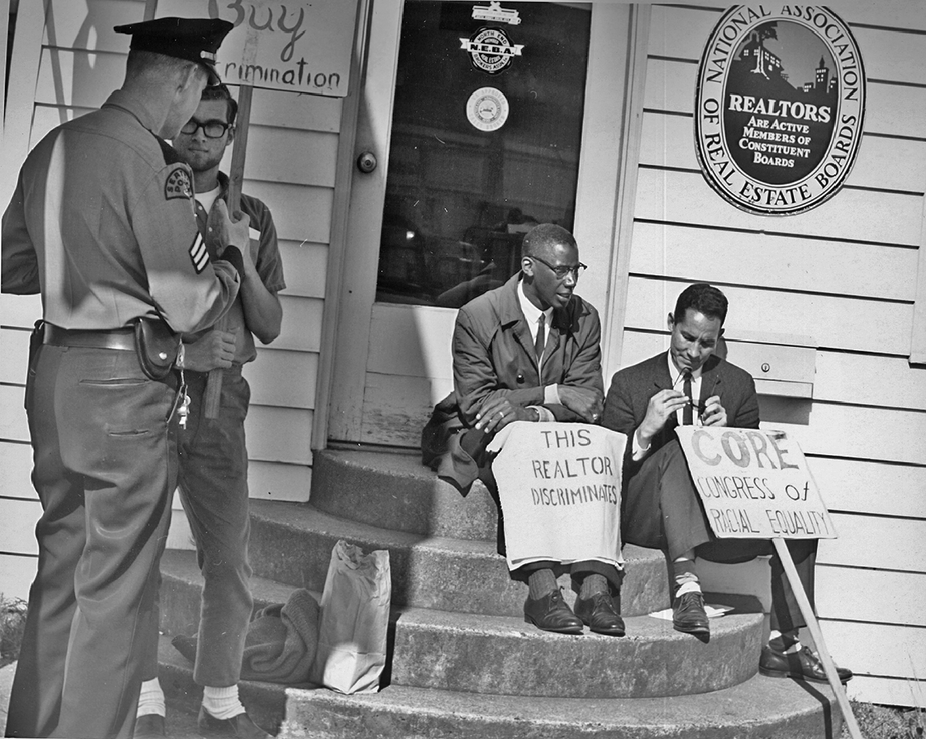



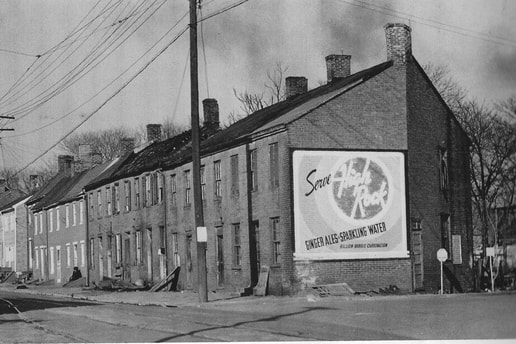

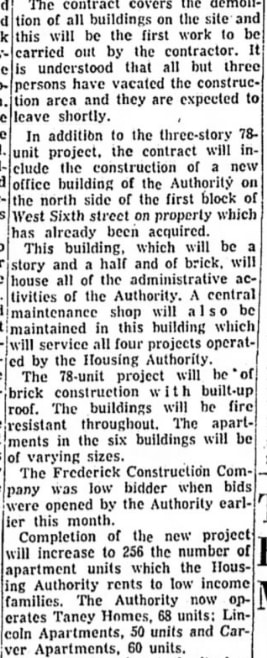






























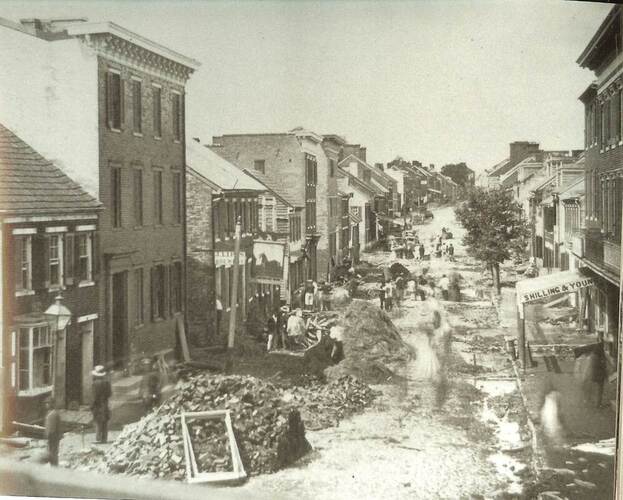

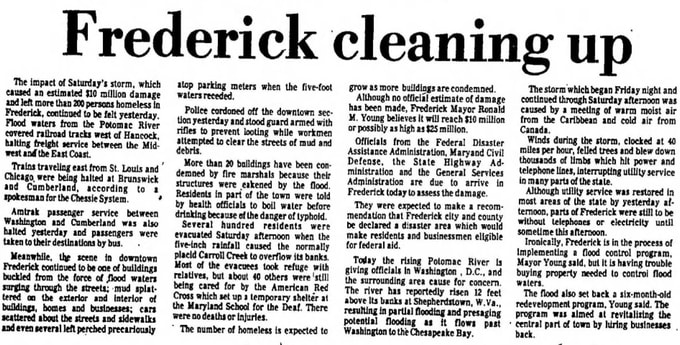

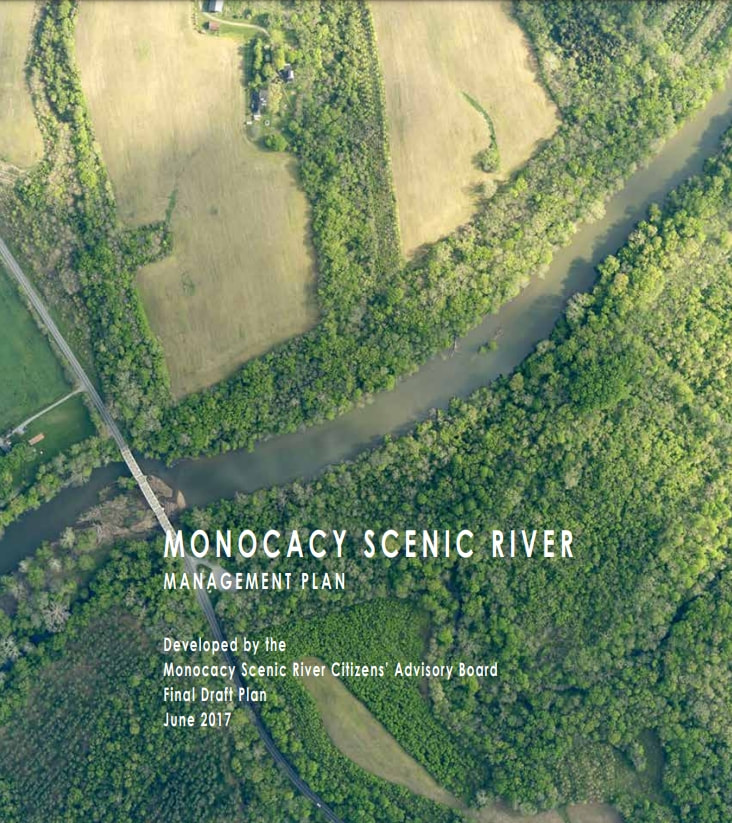




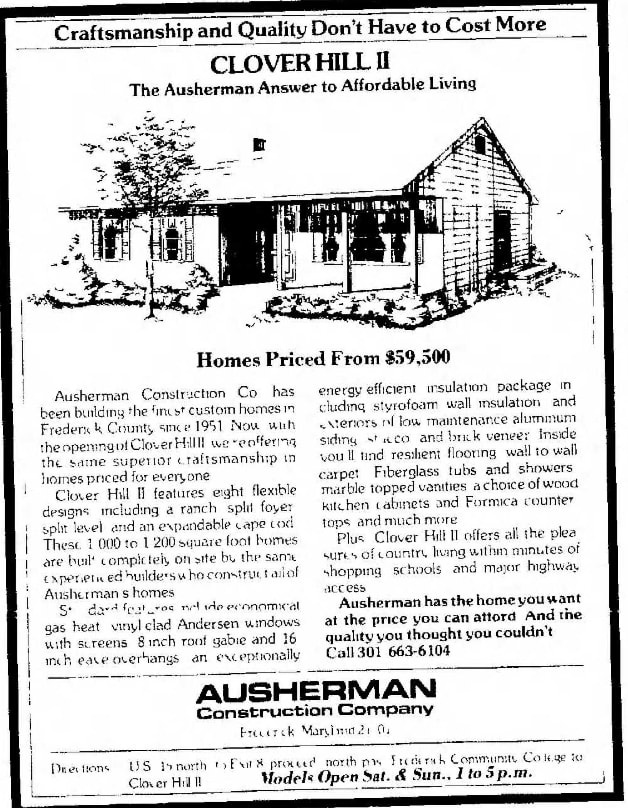

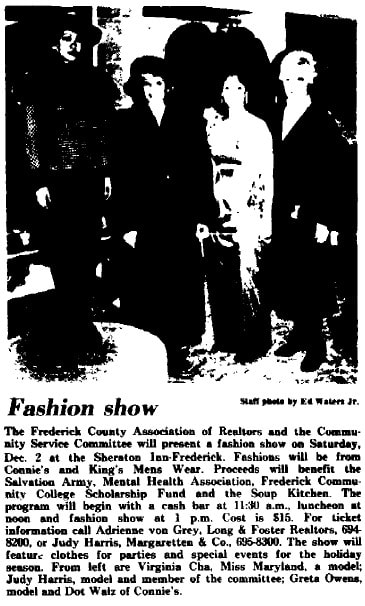











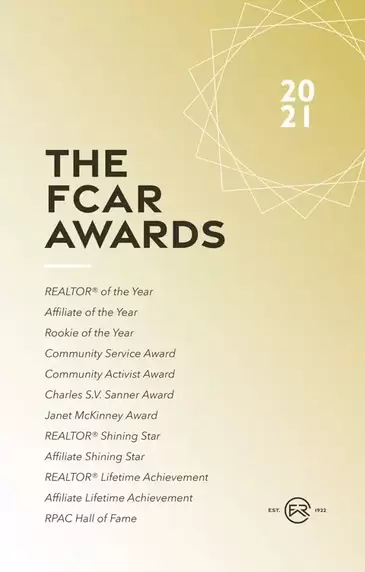






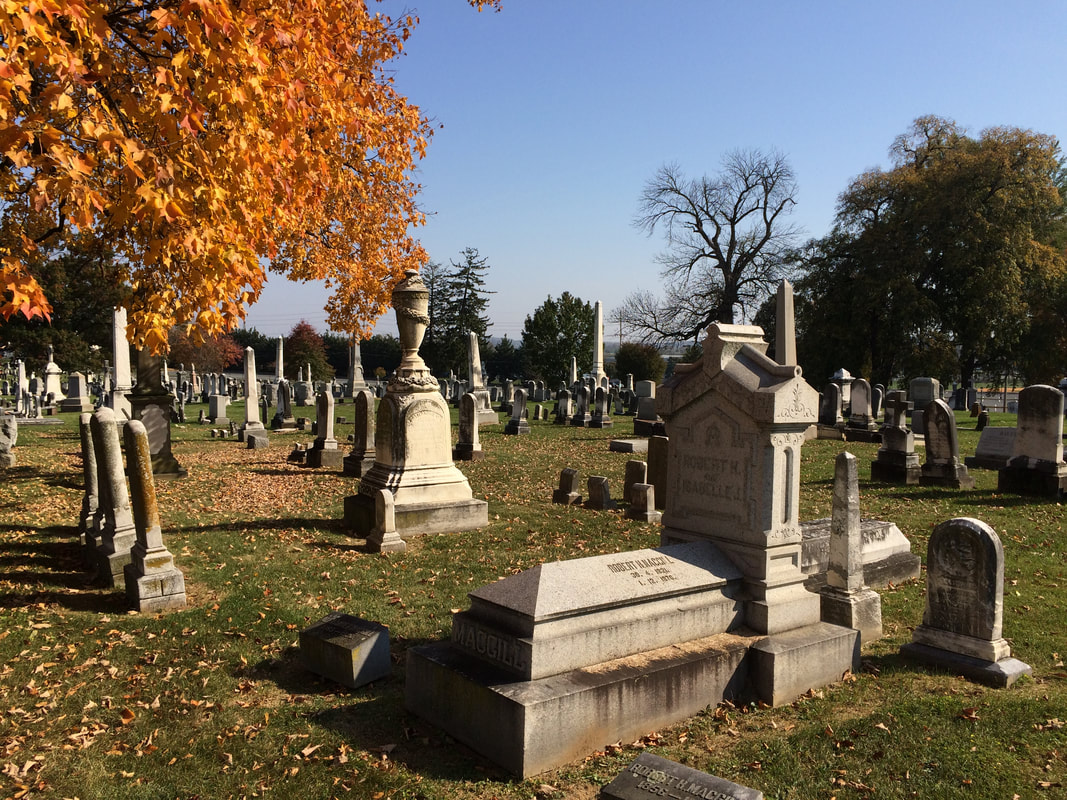


















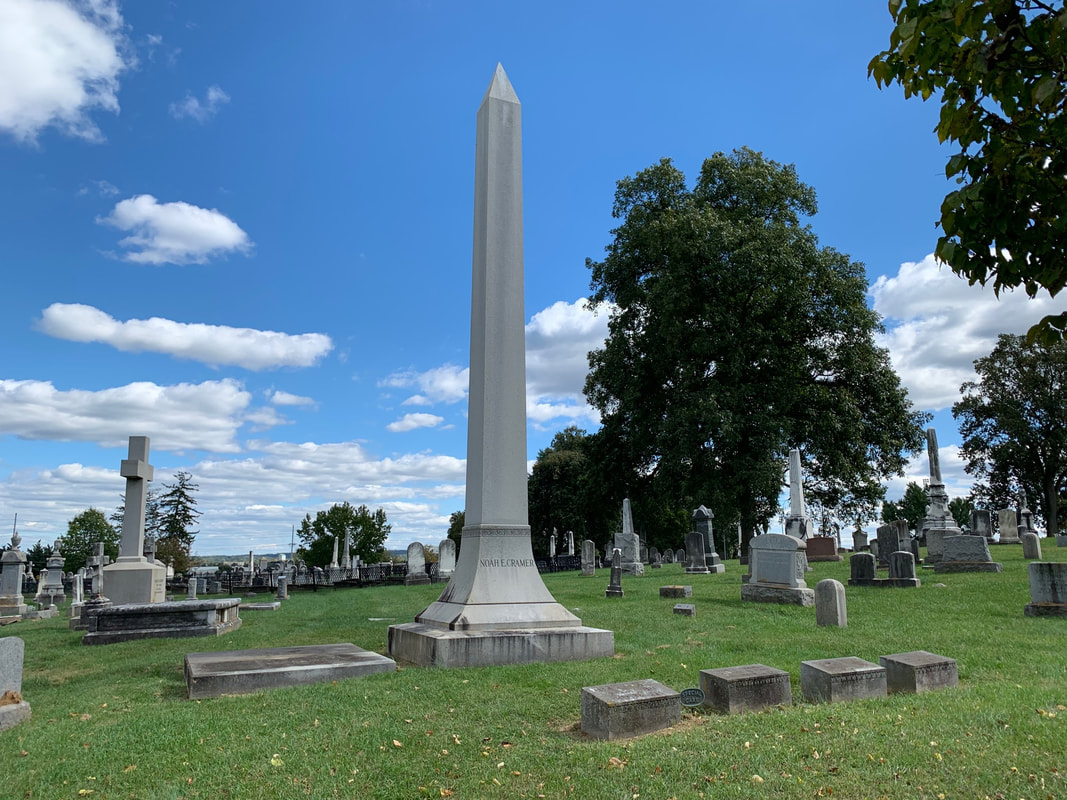
 RSS Feed
RSS Feed